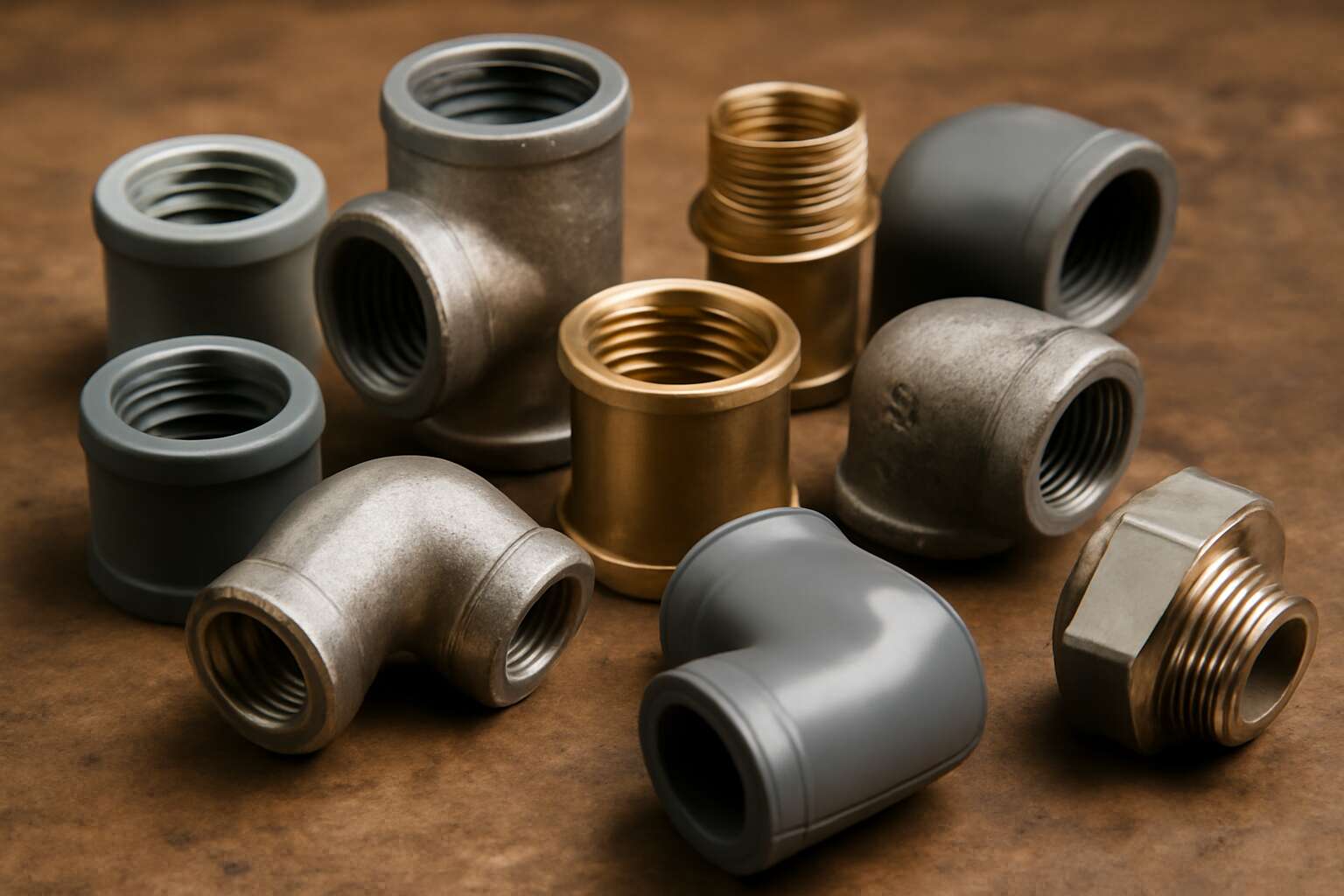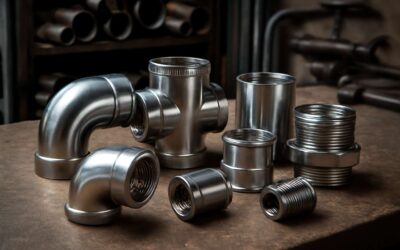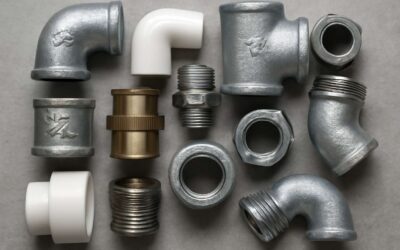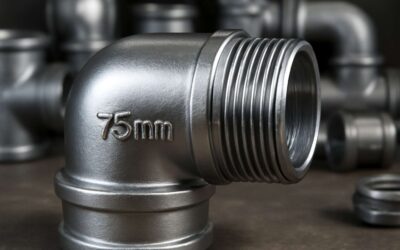Understanding the Importance of HS Codes for Pipe Fittings
What are HS Codes and Why Are They Important?
In the intricate web of international trade, HS codes serve as the navigational compass, guiding the flow of goods across borders with precision and clarity. When it comes to pipe fittings, hs code classification is more than just a bureaucratic step—it’s the key to unlocking seamless customs clearance and accurate tariff application. For exporters and importers in South Africa, understanding the pipe fittings hs code ensures that shipments meet regulatory standards and avoid costly delays.
HS codes, or Harmonized System codes, are internationally recognized numerical identifiers assigned to specific product categories. They streamline communication between customs authorities, traders, and logistics providers, fostering transparency and efficiency. For example, a particular pipe fitting might fall under a distinct hs code that precisely defines its material, shape, and usage. Recognizing and correctly applying this code can significantly impact the cost-effectiveness of trade operations.
To navigate this complex system, some traders prefer to categorize their pipe fittings using a straightforward list:
- Identify the material and function of the pipe fitting.
- Consult the Harmonized System nomenclature for the corresponding hs code.
- Ensure the selected code accurately reflects the product specifications.
This careful classification underscores the importance of the pipe fittings hs code—it’s not just a number, but a vital tool that ensures compliance, reduces risks, and enables smooth international transactions. In a landscape where global trade is increasingly interconnected, mastering HS codes becomes an essential component of successful import-export strategies in South Africa and beyond.
Role of HS Codes in International Trade
In the shadowed corridors of international trade, the significance of the pipe fittings hs code lurks like an unseen guardian, silently dictating the fate of shipments as they traverse borders. Without this cryptic numerical cipher, the journey of each pipe fitting risks becoming a labyrinth of delays and bureaucratic entrapment. For South African traders, understanding the role of the pipe fittings hs code is akin to deciphering a dark, ancient script—an essential step in ensuring their goods flow smoothly through customs.
The role of hs codes in global commerce extends beyond mere classification; they serve as a language that bridges nations, uniting traders and authorities in a shared understanding. Recognizing the precise pipe fittings hs code can mean the difference between swift clearance and a costly standstill. It’s a vital key that unlocks the gates of regulatory compliance, allowing commerce to thrive amidst the shadows of international law.
Specifics of HS Codes for Pipe Fittings
Understanding the importance of the pipe fittings hs code is like having a secret handshake in the world of international trade—you get in smoothly while others get stuck in bureaucratic traffic jams. This specific code isn’t just a number; it’s the passport that ensures your pipe fittings sail through customs without unnecessary delays. For South African traders, knowing the precise pipe fittings hs code can mean the difference between a quick transaction and a costly hold-up at the border.
Each pipe fittings hs code is tailored to a particular type of fitting—be it elbows, tees, or reducers—making it a crucial element for classification accuracy. Confusing one code for another can lead to misclassification, which might trigger extra tariffs or even shipment rejections. To avoid such pitfalls, it’s essential to understand the specifics of the hs code for pipe fittings, especially since these codes can vary depending on material, size, and application.
When pinpointing the correct pipe fittings hs code, consider these key aspects:
- The material of the pipe fittings—whether it’s steel, PVC, or brass
- The design and shape—like elbows, reducers, or flanges
- The intended use—whether for plumbing, irrigation, or industrial applications
Mastering these details ensures seamless integration into the global supply chain, avoiding costly misunderstandings and customs delays. After all, in international trade, precision isn’t just preferred—it’s mandatory.
HS Code Classification for Different Types of Pipe Fittings
Common Types of Pipe Fittings and Their HS Codes
Understanding the intricacies of pipe fittings hs code is crucial for seamless international trade, especially when dealing with South Africa’s dynamic import-export landscape. Each type of pipe fitting—whether it’s a elbow, tee, reducer, or coupling—has a specific classification that helps customs authorities swiftly identify and process shipments. These classifications aren’t arbitrary; they follow detailed HS code structures designed to streamline global commerce. The precision in categorizing pipe fittings hs code can significantly affect tariffs, import duties, and compliance protocols, making it a vital piece of the puzzle for importers and exporters alike.
Common types of pipe fittings—such as threaded fittings, flanged fittings, and socket weld fittings—each fall under distinct HS code ranges. For example, a simple elbow might be classified differently from a specialized reducer or a high-pressure coupling. To clarify, here’s a quick overview:
- Elbows and bends
- T-junctions and crosses
- Reducers and adapters
- Caps and plugs
This detailed classification system ensures that every component finds its precise place within the global trade framework, reinforcing the importance of accurately identifying the correct pipe fittings hs code. Without this precision, shipments risk delays, misclassification, or even costly penalties—highlighting why mastery of these codes is indispensable for professionals navigating the complexities of international trade in South Africa and beyond.
Materials and Corresponding HS Codes
The classification of pipe fittings hs code varies significantly depending on the material used. Steel, PVC, and copper fittings each fall under different HS code ranges, making material a key factor in accurate categorization. This precision ensures smooth customs clearance and correct tariff application. For example, steel pipe fittings might be classified under a specific code, while PVC fittings are grouped separately. The difference in HS codes between materials can affect import duties, especially in South Africa’s competitive market.
Understanding these distinctions isn’t just about compliance; it’s about streamlining logistics. Here’s a quick overview of common materials and their typical HS code classifications:
- Steel pipe fittings: Usually fall within HS code range 7307, covering fittings of iron or steel.
- Plastic (PVC) fittings: Typically classified under HS code 3917, encompassing articles for pipe or tube.
- Copper fittings: Often categorized under HS code 7412, relating to copper and its alloys fittings.
This detailed material-based classification ensures that every pipe fitting is correctly identified, avoiding costly delays or misclassification. Mastering the nuances of the pipe fittings hs code based on material is crucial for professionals navigating South Africa’s import-export landscape—where precise coding can make all the difference.
Size and Specification Impact on HS Classification
The size and specifications of pipe fittings directly influence their HS code classification, an often overlooked but crucial detail in international trade. A small variation in dimensions or design can lead to a different HS code, affecting tariffs and customs procedures. For example, a standard steel elbow fitting might fall under a different HS code if it exceeds certain measurements. This underscores the importance of precise documentation, especially when navigating South Africa’s import regulations.
Understanding these nuances can save time and money. Sometimes, classifications are based on the fitting’s intended use or technical specifications, which can alter the tariff applied. To streamline the process, it’s helpful to remember that:
- The categorization considers both material and size.
- Large or specialized fittings may be classified under different subheadings.
- Consistent documentation ensures smoother customs clearance and avoids costly delays.
Mastering how size and specification impact the pipe fittings hs code is key for professionals aiming to optimize their import-export operations within South Africa’s competitive market. Proper classification isn’t just about compliance—it’s about ensuring the flow of trade remains efficient and cost-effective!
How to Find the Correct HS Code for Pipe Fittings
Step-by-Step Guide to Identifying HS Codes
Pinpointing the correct pipe fittings HS code is often the first hurdle in seamless international trade. With thousands of codes in the global tariff classification system, knowing where to start can feel overwhelming. However, a systematic approach can make this task far more manageable. The process begins by closely examining the specific type of pipe fittings involved, considering material, size, and function, as these factors directly influence the HS code classification.
To ensure accuracy, consult the latest customs tariff schedule or use an online HS code lookup tool tailored for South Africa’s trade regulations. This often involves cross-referencing product descriptions with the detailed headings and subheadings provided in the customs tariff. For those who prefer a structured method, here’s a simple step-by-step guide:
- Identify the primary material of the pipe fittings, such as steel, plastic, or brass.
- Determine the specific type of fitting—elbows, couplings, reducers, or tees.
- Match the product description with the corresponding tariff heading, paying close attention to any subheadings that specify material or size.
By following these steps diligently, businesses can accurately classify their pipe fittings and avoid costly delays or misclassification errors. Remember, getting the correct pipe fittings HS code not only facilitates smoother customs clearance but also ensures compliance with international trade standards.
Using Customs Tariff Databases and Resources
Finding the correct pipe fittings HS code can feel like navigating a labyrinth, especially when global trade regulations shift as often as the seasons change. Fortunately, customs tariff databases and online resources are invaluable tools that simplify this complex task. These platforms provide detailed, up-to-date classifications that help businesses avoid costly mistakes. By entering specific product details—such as material, size, or function—you can accurately pinpoint the pipe fittings HS code relevant to your trade.
Many customs authorities, including those in South Africa, offer online lookup tools designed to streamline this process. These tools often feature comprehensive search functions, allowing you to input keywords or browse categories to find the precise classification. For a more structured approach, consider consulting the tariff schedule’s detailed descriptions, which often include subheadings that specify material or size. This ensures your classification aligns perfectly with international standards, reducing delays at customs and promoting smoother trade transactions.
Expert Tips for Accurate Classification
In the labyrinthine corridors of international trade, the quest for the correct pipe fittings HS code can seem an elusive chase—yet, with expert guidance, clarity emerges like dawn’s first light. When navigating these intricate classifications, precision is paramount; a misstep can ripple through customs processes, delaying your shipment and inflating costs. The key lies in understanding that the pipe fittings HS code isn’t merely a number but a nuanced identifier—an echo of material, size, and function woven into a universal language.
To unearth the accurate classification, start with a keen eye on product specifics. Materials such as PVC, cast iron, or stainless steel each carry distinct HS codes. Size and intended use further refine the classification, making it essential to cross-reference detailed descriptions within tariff schedules. Remember, a well-informed search—using online customs tools or detailed tariff descriptions—can transform the daunting into the manageable, ensuring your trade flows smoothly and without unnecessary hurdle.
Implications of HS Codes for Importers and Exporters
Customs Duties and Tariffs
In the intricate dance of international trade, the pipe fittings HS code acts as a silent conductor, orchestrating the flow of goods across borders with precision and clarity. For importers and exporters in South Africa, understanding these codes is more than a bureaucratic necessity—it’s a key to unlocking smoother customs procedures and avoiding unforeseen delays. When a shipment’s pipe fittings hs code is correctly classified, customs duties and tariffs are calculated with accuracy, preventing costly miscalculations that could cripple profit margins.
Misclassification, however, can lead to a cascade of complications—delays, fines, or even confiscation of goods. For instance, some countries impose higher tariffs on certain materials or sizes, making it essential for trade professionals to be vigilant in identifying the correct pipe fittings hs code. In this complex web of tariffs and duties, an incorrect HS code can transform a straightforward transaction into a costly ordeal, emphasizing the importance of precise classification. Ultimately, for those navigating the labyrinth of international trade, mastering the implications of the pipe fittings HS code ensures a harmonious passage for goods and profits alike.
Trade Compliance and Documentation
For importers and exporters, missteps in the classification of the pipe fittings HS code can be more costly than a poorly welded joint. Accurate coding isn’t just a bureaucratic checkbox—it directly impacts trade compliance and documentation. When the correct pipe fittings HS code is used, customs authorities can process shipments swiftly, avoiding unnecessary delays and fines. Conversely, an incorrect code can turn a smooth transaction into a bureaucratic nightmare, with extra inspections, penalties, or even confiscation of goods.
Trade professionals need to be vigilant because the implications of the pipe fittings HS code ripple through every aspect of international trade. Proper classification ensures that all paperwork aligns perfectly with customs requirements, facilitating seamless clearance. To help navigate this maze, some countries require detailed documentation, including invoices that specify the correct HS code, material, and size. Here’s a quick reminder: misclassification can lead to:
- Unexpected tariffs or duties, eating into profit margins
- Prolonged delays at customs, causing supply chain headaches
- Legal repercussions or fines for non-compliance
In the complex dance of cross-border trade, getting the pipe fittings HS code right isn’t just an administrative task—it’s a strategic move that keeps the flow of goods steady and your business thriving. After all, a correctly classified HS code ensures that your shipments sail smoothly through customs, turning what could be a costly ordeal into a well-oiled operation.
Avoiding Common Classification Errors
In the labyrinthine corridors of international trade, the implications of the pipe fittings HS code are profound—more consequential than the heftiest shipment of steel or the most intricate weld. An error in classification can transform a seamless passage through customs into a bureaucratic quagmire, fraught with delays, fines, and the peril of confiscation. For importers and exporters, precision in assigning the correct pipe fittings HS code isn’t merely clerical; it’s a safeguard against economic turmoil and legal repercussions.
Misclassification can inadvertently trigger unexpected tariffs, gnawing into profit margins with relentless teeth. Customs authorities, armed with meticulous tariff databases, scrutinize every shipment, and inaccuracies in the pipe fittings HS code can lead to prolonged inspections and costly hold-ups. To avoid this, trade professionals should vigilantly cross-reference the specific characteristics—material, size, and application—to ensure each product aligns perfectly with its designated HS code. An oversight here doesn’t just threaten compliance; it risks unraveling the delicate fabric of global supply chains.
In South Africa, where trade regulations are as dynamic as the ocean currents, understanding the nuanced impact of the pipe fittings HS code is vital. Without careful classification, shipments may face punitive duties, or worse, legal entanglements that stall business momentum. Navigating this complex terrain requires an eagle’s eye for detail and a steadfast commitment to accuracy—because in the realm of international commerce, the right HS code is the silent hero, guiding shipments safely home.
International Trade Regulations and HS Codes
Harmonized System and World Customs Organization
In the labyrinthine corridors of international trade, where unseen forces govern the ebb and flow of commerce, the harmonized language of HS codes emerges as a spectral ledger — a cipher that binds nations in a silent pact of understanding. The World Customs Organization (WCO), the shadowy architect behind this system, crafts a universal taxonomy that transforms chaos into clarity. For those navigating the dark waters of importing and exporting pipe fittings, the pipe fittings HS code is more than mere digits; it is the key to unlocking tariffs, ensuring compliance, and avoiding the haunting specter of misclassification.
Regulations woven into this system serve as the backbone of trade, dictating how goods are categorized and taxed across borders. In South Africa, where the trade winds blow strongly towards industrial expansion, the correct application of the pipe fittings HS code is vital. It ensures that shipments pass through customs gates unimpeded, their journey guided by the precise language of classification. The system’s intricate structure, often resembling a cryptic rune, demands meticulous attention — a misstep could summon hefty penalties or delays. Thus, mastering the nuances of the HS code for pipe fittings becomes an act of strategic mastery in the shadows of global commerce.
Regional Variations and Exceptions
International trade regulations are a complex web woven with layers of legal and procedural intricacies. While the harmonized system provides a unified framework, regional variations and exceptions often introduce subtle deviations that can catch even seasoned traders off guard. For instance, different countries may assign unique subcategories or codes for similar products, including pipe fittings. These discrepancies are not mere bureaucratic quirks but reflect underlying economic policies, trade agreements, and local standards. Recognizing these nuances is essential for ensuring seamless customs clearance.
In South Africa, the application of the correct pipe fittings HS code is particularly crucial, especially given the country’s strategic focus on infrastructure development. Misclassification can lead to unexpected tariffs or delays, undermining project timelines and profitability. To navigate this labyrinth, traders often rely on official customs tariff databases, which detail regional variations and exceptions. For example, certain types of pipe fittings made from specific materials might fall under different subheadings, influencing duties and compliance requirements. Staying vigilant and informed about these regional distinctions ensures that shipments traverse borders without unnecessary hindrance.
- Understanding regional trade agreements that may influence tariff rates.
- Monitoring updates in customs classifications to accommodate new pipe fitting materials or designs.
- Consulting local customs authorities or trade experts to clarify any ambiguous HS codes.
Trade Agreements and HS Code Implications
International trade regulations are more than just a maze of legal jargon; they are a strategic battlefield where precision can make or break a business. The pipe fittings HS code, in particular, acts as a digital fingerprint—an identifier that unlocks tariffs, compliance standards, and customs procedures. Misclassification might seem minor, but it can trigger costly delays or unexpected duties, especially in regions like South Africa where infrastructure development is accelerating rapidly.
Trade agreements between countries can significantly influence the applicable tariff rates for pipe fittings. These agreements often contain provisions that reduce or eliminate duties, but only if the correct HS code is used. For example, a specific type of stainless steel pipe fitting might fall under a different subheading in South Africa’s customs database, depending on the material or design. Staying vigilant about these regional nuances is essential.
- Monitoring updates in customs classifications ensures that new materials or innovative designs are accurately classified.
- Consulting local customs authorities or trade experts can clarify ambiguous HS codes, preventing costly errors.
Updating and Maintaining Accurate HS Code Data
Staying Informed About Tariff Changes
In the intricate dance of international trade, the choreography of accurate HS code data is paramount. As tariffs shift like the tides, staying informed about tariff changes becomes a vital compass guiding importers and exporters through the labyrinthine corridors of customs regulations. Recognizing that the pipe fittings HS code is not merely a number but a key to unlocking seamless clearance, businesses must vigilantly update their classification data. The relentless march of trade policies demands a proactive stance, ensuring that the classification remains impeccable amidst evolving standards.
To navigate this ever-changing landscape, it’s essential to monitor official customs bulletins and tariff schedules regularly. Embracing technology—such as automated databases—can serve as a lighthouse in turbulent waters, alerting traders to amendments that could impact duty calculations or compliance status. An ingrained habit of reviewing these updates not only mitigates errors but also preserves the integrity of trade documentation. After all, in the realm of pipe fittings HS codes, precision is not an option—it is the foundation of trust and efficiency in global commerce.
Role of Customs Consultants and Advisory Services
In the realm of international trade, even the slightest misstep in HS code classification can ripple into costly delays or penalties. This is especially true for pipe fittings, where accurate HS code data is essential for smooth customs clearance. The role of customs consultants and advisory services becomes invaluable here, acting as seasoned guides through the labyrinth of tariff intricacies. Their expertise ensures that the classification of pipe fittings HS code remains impeccable, safeguarding businesses against the turbulence of shifting trade regulations.
By leveraging the insights of seasoned customs specialists, companies can stay ahead of evolving standards. They often utilize advanced tariff databases and analytical tools to monitor updates that could influence duty calculations. Engaging with these professionals helps to mitigate classification errors, which might otherwise lead to unexpected costs or compliance issues. It’s a strategic partnership that turns complex customs landscapes into navigable pathways, especially when dealing with regional variations and trade agreements affecting the pipe fittings HS code.
Tools for Managing HS Code Data Effectively
Maintaining an up-to-date and precise database of HS codes is crucial in navigating the complex waters of international trade, especially when dealing with pipe fittings. Outdated or incorrect data can transform a smooth shipment into a costly ordeal, with delays and hefty penalties lurking around every corner. To mitigate this risk, many companies now leverage sophisticated tools designed to regularly update and verify their HS code information.
These tools often incorporate real-time tariff updates, ensuring that the pipe fittings HS code remains aligned with the latest regulatory standards. Implementing automated systems that monitor regional variations and trade agreement impacts can dramatically reduce classification errors. This proactive approach transforms what used to be a painstaking manual process into a seamless operation.
For example, some of the most effective data management solutions include features such as:
- Automatic alerts for tariff changes affecting pipe fittings HS code
- Comprehensive databases covering regional exceptions and trade agreements
- Integration with customs documentation platforms to streamline classification accuracy
By harnessing these advanced tools, businesses can stay ahead in the race for compliance, ensuring that their pipe fittings are classified correctly every time. This strategic advantage not only reduces risk but also saves precious time and resources in the often unpredictable world of international trade.




0 Comments